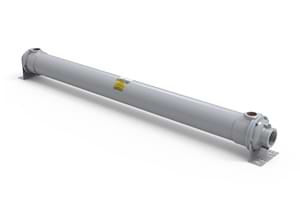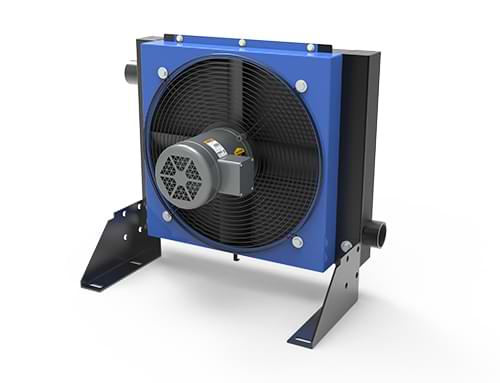Aftercoolers for the Agriculture Industry
An intercooler steps in to chill that air down before it hits the engine, giving you more power and better fuel economy. For farmers, that translates to getting more done without burning through diesel like it’s going out of style. Plus, cooler air reduces wear and tear on engine parts, which is a big deal when you’re trying to avoid downtime during planting or harvest season.
Applications
- Tractors with Turbocharged Engines: Modern tractors, like a John Deere, often come with turbochargers. An aftercooler keeps the engine performing at its peak, whether you’re plowing fields or hauling heavy loads.
- Combine Harvesters: During harvest, a machine like a Case IH Axial-Flow combine is working overtime. The aftercooler helps maintain horsepower so you’re not stuck waiting on a sluggish engine when time’s tight.
- Irrigation Pumps: Diesel-powered pumps for irrigation systems benefit from aftercoolers too. Cooled air means consistent output, keeping water flowing to crops without interruption.
Water Cooled Aftercoolers
Compressor Cooling
- Fixed or Removable Tube Bundles
- Material Options Available
- Standard and Custom Options

Air Cooled Aftercoolers
Compressor Cooling
- Use Ambient Air to Cool
- Variety of Motor Options
- Standard Pressures of Up To 250 psi

The Benefits of Aftercoolers for Agricultural Applications
Aftercoolers play a bigger role in agriculture than most folks realize, especially when you dig into the nitty-gritty of how they keep operations running efficiently. Beyond just cooling air, they help manage the harsh conditions that farm equipment often faces—think scorching summers, high humidity, or even the occasional cold snap. For farmers, that reliability can mean the difference between a smooth season and a costly breakdown.
Take a dairy farm in California, for example. They might rely on a turbocharged generator to keep milking machines and cooling systems online during a power outage. Without an aftercooler, that generator could lose efficiency fast, leaving the farmer scrambling. Or picture a wheat farmer in Kansas running a combine through a dusty, 90-degree day— the aftercooler keeps the engine from choking under the strain.
One area where aftercoolers really stand out is in reducing emissions. Modern agriculture is under pressure to go greener, and turbocharged engines with aftercoolers burn fuel more completely thanks to that denser, cooler air. This cuts down on exhaust pollutants, which is a win for both the environment and any regulatory standards a farm might need to meet. Imagine a soybean farmer in Iowa running a fleet of turbocharged sprayers—aftercoolers help keep those machines compliant while still delivering the horsepower needed to cover acres fast.
They also shine in specialized setups. Take a look at greenhouse operations, for instance. Many use diesel engines to power ventilation or heating systems, and an aftercooler ensures those engines don’t overheat in the tight, warm confines of a greenhouse. Or consider a cattle ranch in Texas using a turbocharged feed mixer. The aftercooler keeps the engine steady, even when it’s churning through heavy loads of grain day after day.
Maintenance is another angle worth mentioning. Aftercoolers can extend the life of components like pistons and valves by keeping temperatures in check. For a farmer running older equipment—say, a 20-year-old Massey Ferguson tractor—that’s money saved on repairs. And in regions prone to dust, like the Great Plains, some aftercoolers are designed to handle airborne grit without clogging, which is a headache no one needs during harvest.


